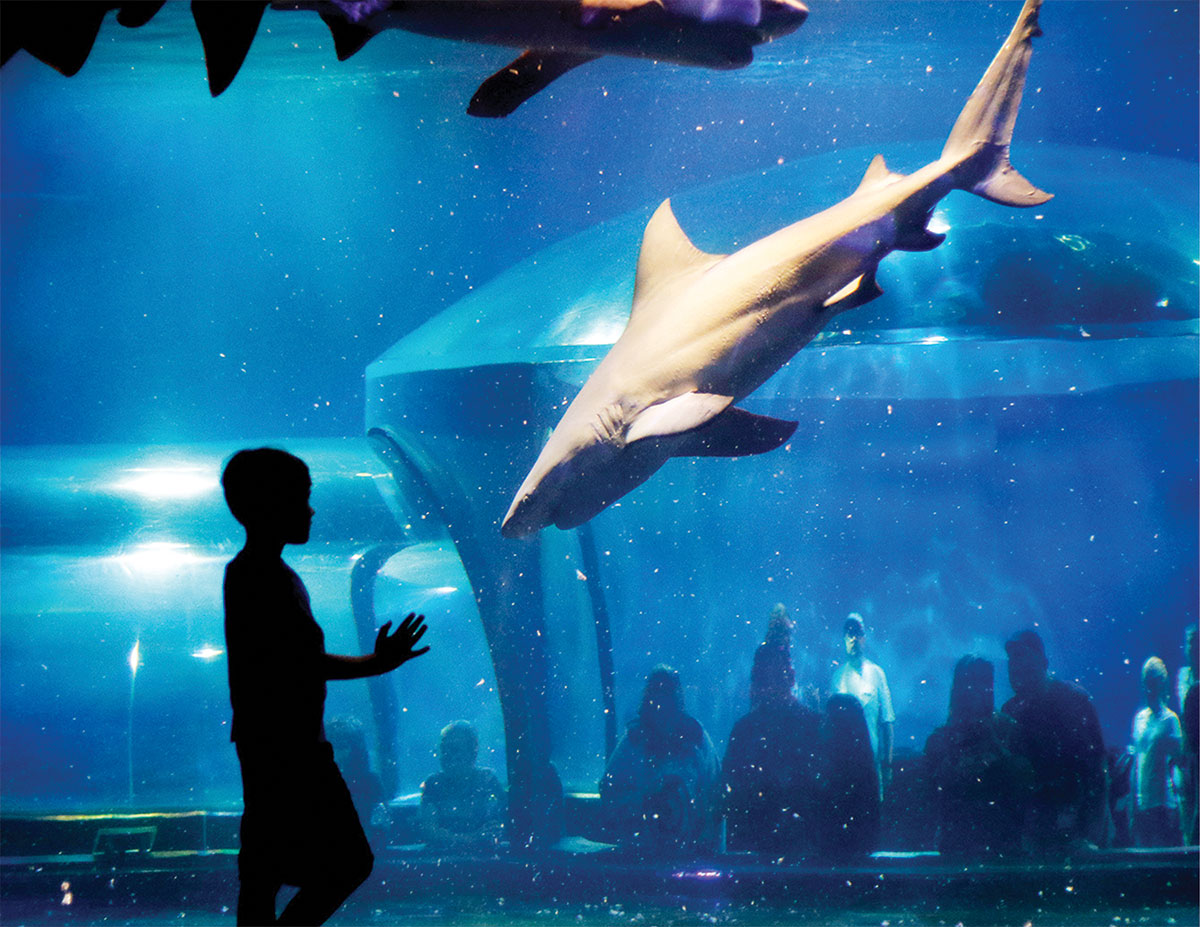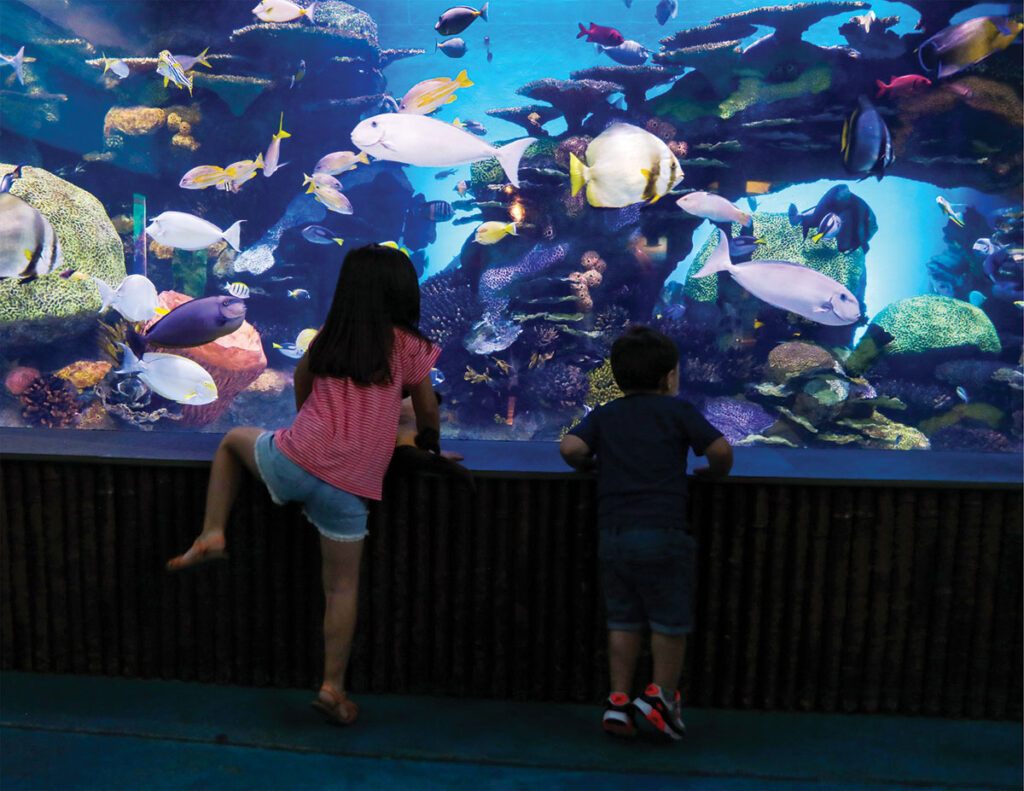
The Oklahoma Aquarium brings aquatic life from around the world to the Midwest
JENKS, OKLA. – The Oklahoma Aquarium is in Jenks, Oklahoma just southwest of Tulsa. Built it 2002, it is the largest aquarium attraction in a four-state area. The aquarium features the world’s largest exhibit of bull sharks visible through a unique walk through tunnel. The aquarium is home to more than 500 aquatic species and 10,000 animals.
“It’s a very good aquarium. It was cool to see native aquatic life. The Shark exhibit and the coral reef made me miss California even more. A must go,” visitor Frank G. said. “A wonderful aquarium with beautiful in-tank displays. Very informative plaques along with the various displays. And of course, the shark tunnel was amazing.,” visitor Nancy S. said.
The Aquatic Oklahoma exhibit features ecosystems located in Oklahoma’s more than 160,000 miles of waterways and 1,401 square miles of water bodies serving as habitats for many amphibians, reptiles, fish and mammals. Visitors can learn about noodling, feed smaller turtles, and visit an alligator snapping turtle that is older than Oklahoma.
The Amazing Invertebrates exhibit address animals with no backbone. These species range in size from smaller than grain of sand to half the length of a football field. Invertebrates comprise 97 percent of all species on earth. Some of the earliest invertebrate fossils are from 543 million years ago when the entire state of Oklahoma was submerged by a sea known as the Western Interior Seaway. You can see and even touch some of these amazing creatures in the exhibit.
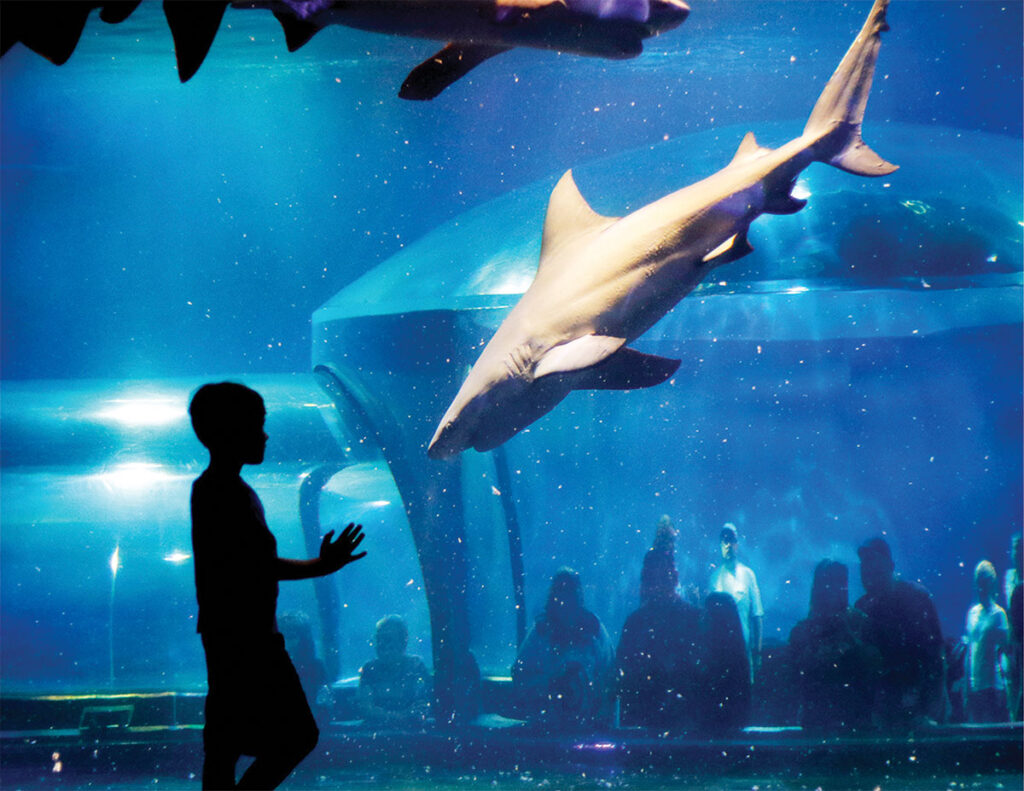
With many animals visitors can touch or feed, the EcoZone Exhibit, displays different types of ocean nurseries which provide safe, shallow waters with plenty of hiding places. These nurseries include the rocky coast from Northern California to Alaska, ocean caves, coastal marshes, Africa’s freshwater Lake Malawi, mangrove forests and coral reefs. The EcoZone exhibit features many interactive areas where visitors can touch sea stars, abalone, shark eggs, grown sharks, juvenile stingrays or feed shrimp to the stingrays in the Mangrove Forest.
The 3,800-gallon freshwater tank in the Extreme Amazon gallery highlights the ways Amazonian fish have adapted to life in the world’s largest river. The Amazon River Basin is the largest rainforest globally and produces about a quarter of all Earth’s oxygen. The Amazon River is one of the most biodiverse regions having a wide variety of different plants, animals and has more fish species than the entire Atlantic Ocean. The gallery features freshwater stingrays, a reptilian couple, and a pop-up tunnel that gives kids a close-up view of the animals.
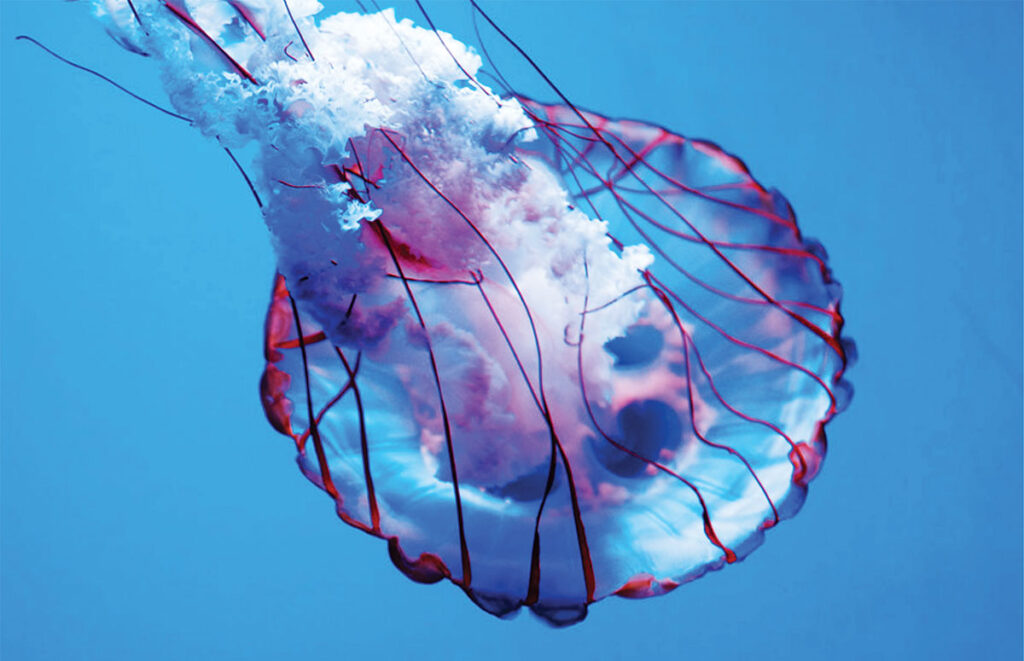
The Extreme Fishes exhibit features aquatic life that has adapted unique behaviors and/or body parts to survive in their habitats. These adaptations may involve body shapes, colors, hunting strategies, defense tactics, and/or parental care. In the Extreme Fishes gallery, visitors will see fish swimming upside down, skipping on land, and eating with two pairs of jaws.
In the Marvels and Mysteries exhibit, visitors will see fathers giving birth, animals producing electricity and animals with three hearts. The Secret World of the Octopus exhibit allows visitors a 360-degree view of a giant Pacific octopus. Seahorses, piranha, electric eels, archerfish, ghost knifefish, moon jellyfish, Pacific sea nettle and golden poison dart frogs are also in this exhibit.
The Ozark Stream exhibit features fish and animals that live in a stream biome. Beavers, river otters, raccoons and fish and be seen.
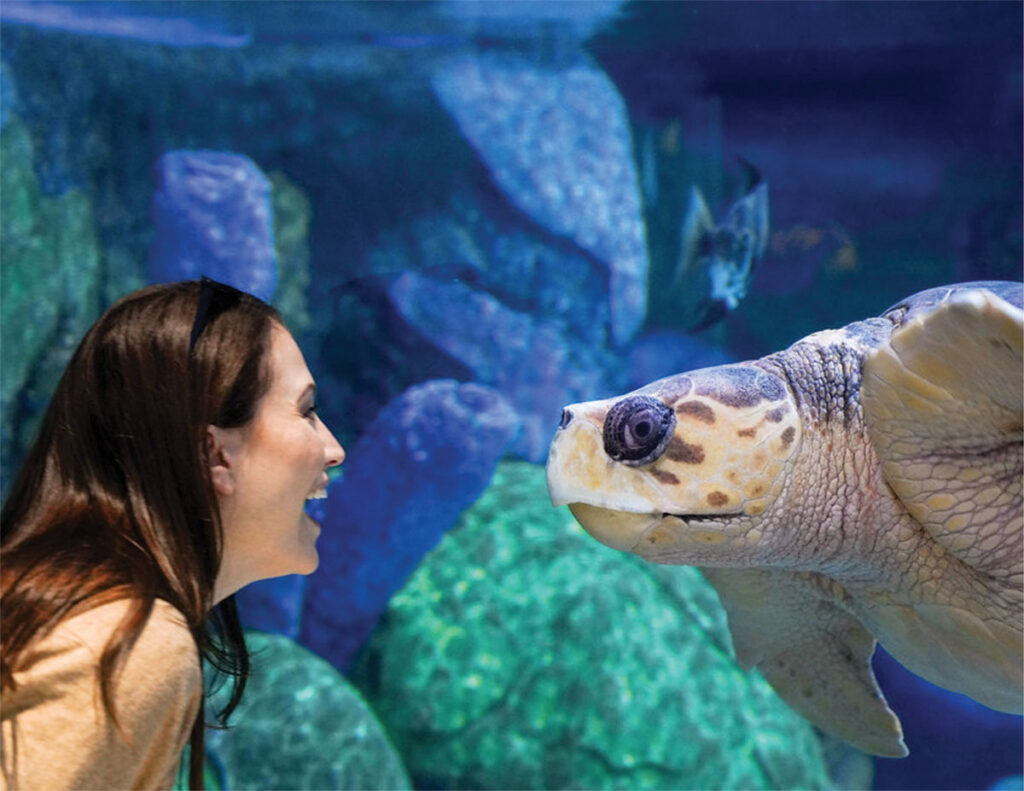
The Polynesian Reef showcases the sea life of thousands of small islands in the Western and South Pacific. It contains the second-largest tank with 65,000 gallons of salt water. More than 50 species of fish live in the tank including angelfish, damselfish, tang, wrasse, butterflyfish, triggerfish, rabbitfish, hogfish, grouper and parrotfish. The coral in the exhibit is artificial, but live coral is being grown from a few polyps harvested in the ocean to grow them in a safe, controlled environment. They can be seen in the EcoZone exhibit.
Sea Turtle Island is home to two loggerhead sea turtles rescued from Virginia Beach, Va. Unable to be released, the turtles went to the Virginia Marine Science Museum. When they outgrew the facilities, they came at Turtle Island. Bonnethead and leopard sharks along with Osteichthian (Bony) fish are also in the Turtle Island Exhibit.
The Oklahoma Aquarium is home to the world’s largest collection of bull sharks. The 380,000 gallon salt water also contains three nurse sharks. Because the aquarium is one of a few facilities with bull sharks, they have helped pioneer research in their proper care and the protection of coastal communities.
The Aquarium also houses the Coral Reef Café, Aquarium Gift Shop and a playground. Field trips, special tours, group tours are available. Tickets may be purchased online.

